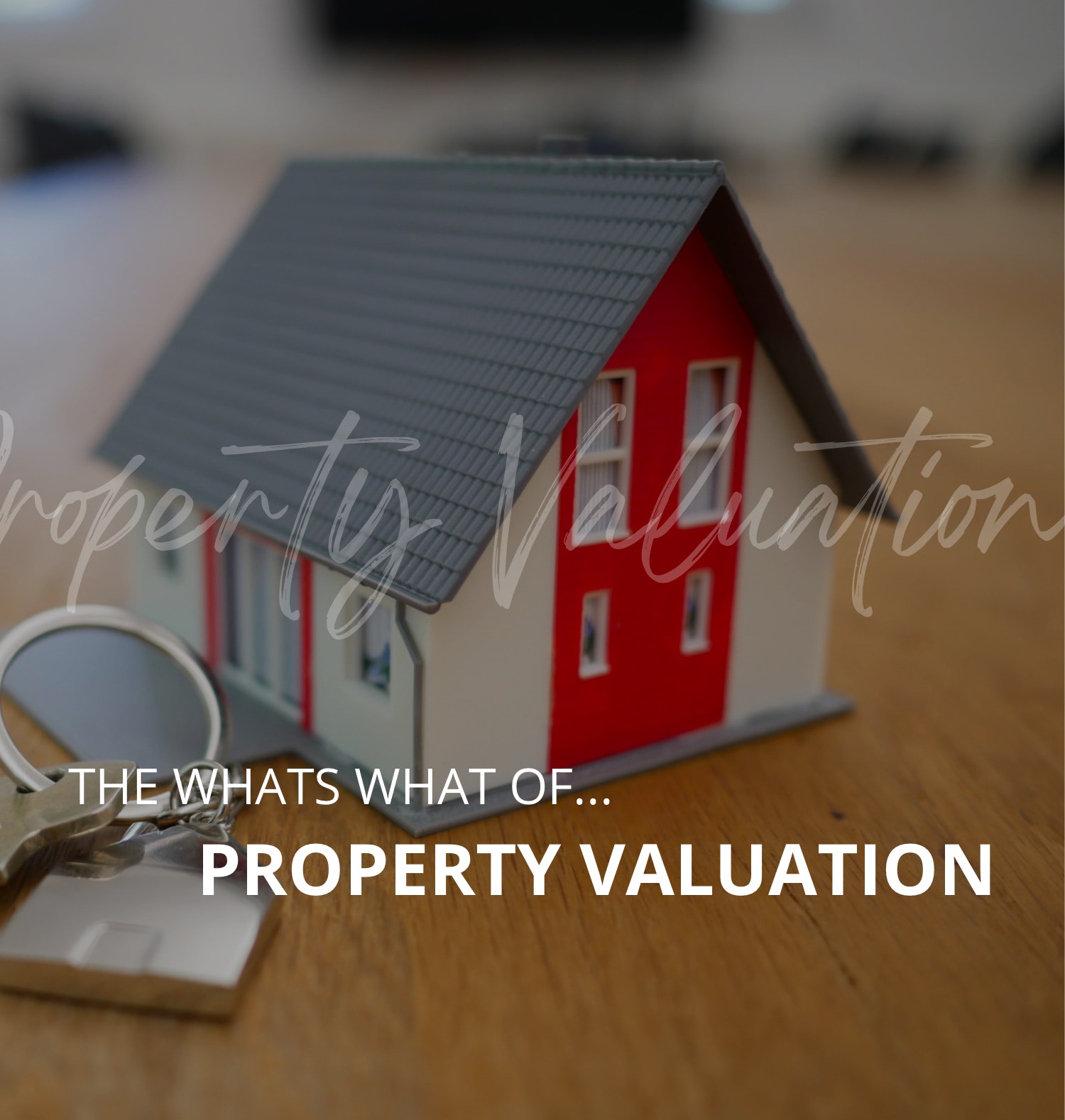One of the first things you’ll need to do when you’re buying a property, refinancing your home loan or trying to access the equity in your property, is to get a valuation of the asset. This valuation will be used by your lender to make sure they’re lending responsibly. Your bank/lender needs to make sure that they’re not lending more than the recoverable value of the property. That’s to ensure that if, for any reason, you couldn’t afford to continue to repay your debt and they needed to take possession of the property and sell it, they would cover their costs.
In Australia we have three main types of valuations: ‘desktop’, ‘kerbside’ and ‘full’ property valuations. In this blog post we’ll discuss all three types and explain the differences between them. We’ll also discuss why your lender might request one type of valuation as opposed to another.
On the go? Here’s 30 seconds of take outs:
- There are 3 main types of valuations: desktop, kerbside and full property valuations.
- Your bank/lender will decide on which valuation is required based on your loan-to-value ratio (LVR).
- A desktop valuation uses data that’s available online and is the fastest & cheapest valuation.
- Desktop valuations are only used low-risk transactions with a low LVR.
- Kerbside valuations are somewhat more accurate than desktop valuations and are sometimes used for low to medium risk loans, i.e. If the LVR is less than 80% of the property value.
- A full valuation is the most common valuation performed in Australia.
- Full valuations require a licensed valuer to physically inspect the property inside and out, resulting in the most accurate valuation and a detailed property report.
Keep reading >>
Which valuation will you need?
Each bank/lender has their own specifications for the valuations they require. Your finance broker or banker will be able to advise which is required for your circumstances. However, in almost all circumstances, the valuation you need will depend on your loan-to-value ratio (LVR).
Loan-to-value ratio (LVR)
Banks/lenders will assess your borrowing capacity based on the amount that you want to borrow and your loan-to-value ratio (LVR). The LVR is the ratio of the amount you want to borrow compared to the value of the property you wish to buy, expressed as a percentage. A higher LVR represents a higher level of risk to the lender which will affect your borrowing power. The bigger your deposit, the lower the LVR will be. An LVR of higher than 80% is generally considered high-risk. We talk more about LVRs in the blog “The one property after the other myth”.
Desktop valuation
A desktop valuation is also sometimes referred to as an ‘electronic valuation’, or an ‘automated valuation model’ (AVM). For a desktop valuation, the bank or valuer will usually only refer to data that’s available online, hence the name! They will look at any recent property data, relevant sales in the area and any comparable property listings to get an idea of the estimated value of your property. This type of valuation can be carried out without ever having to visit the property and can be undertaken almost immediately. In Australia, most lenders use the RP Data app on the CoreLogic website to create a desktop valuation report.
When would a desktop valuation be ok to use?
A desktop valuation is usually only carried out for low-risk transactions with a low LVR. Not all lenders will use a desktop valuation as they may not consider it a reliable result. This is because without physically visiting the property it’s impossible to accurately know if the property is in a reasonable condition. For example, if it’s been recently renovated or alterations have been made that might affect its value such as part of the building had been altered for a business purpose.
Also, if the property hasn’t been on the market for many years, or there aren’t many comparable properties for sale in that area, up-to-date sales data may not be available. Plus, lenders will never use a desktop valuation for construction loans.
Pros and cons of a desktop valuation
The biggest benefit of a desktop valuation is its cost. Many banks will provide desktop valuations for free, but at worst it will usually cost only $75 to $200.
The second greatest thing about a desktop valuation is the speed at which you can get the report as it’s almost immediate. CoreLogic reports take only a few minutes. Then once it’s been issued, your desktop valuation is valid for 90 days.
So, even if it’s not guaranteed to be accurate, it’s a great starting place to get an idea of the value of your property. If the valuation comes in lower than you would have expected, you can always request a full valuation with another lender.
What is a kerbside valuation?
A kerbside valuation is the next step-up from a desktop valuation. A kerbside valuation requires a certified valuer to visit the property in question and inspect the outside of the property. This means they don’t need to gain access to the inside of the property but can get a good idea of its overall condition from the outside of the property. It’s also sometimes known as a “drive-by valuation” as in many cases the valuer doesn’t even need to get out of the car! From the ‘kerbside’, the valuer can take photographs and can assess any obvious issues with the property and local area and will note anything that might affect the valuation.
A kerbside valuation will also consider other factors like local property listings, recent sales and everything else you’ll find as part of the desktop valuations. Kerbside valuations are often used when the loan is considered a low to medium risk, i.e. If the LVR is less than 80% of the property value.
Pros and cons of a kerbside valuation
Kerbside valuations are slightly more costly than a desktop valuation but are considered more reliable as they are more detailed than a desktop valuation. In comparison, they’re also far less expensive than a full valuation, costing only approximately $100 to $120. A kerbside valuation usually only takes a few hours, the property value report can be issued within 24hours and is valid for up to approximately 3 months. A kerbside valuation is also useful if you have tenants living in the property because the valuer doesn’t require access to the property.
If there’s already accurate market data about the property and you have plenty of equity in the property, many valuers will be happy with a kerbside valuation to secure a release of equity or to allow you to re-mortgage.
What does a full valuation involve?
A full valuation is the most common type of valuation undertaken in Australia, accounting for more than half of all valuations. It will almost always be required when a loan has a high risk LVR (above 80%).
A full valuation means that a valuer will physically inspect the property inside and out and is expected to produce a detailed (legally-binding) property report. The report will vary according to the property type but will generally consist of at least 3 pages. It will include a comprehensive account of the condition of the property, as well as photos of each room, any recent renovations, as well as zoning restrictions and lists of local area amenities such as locations of schools, shops etc.
Pros and cons of a full valuation
As a full valuation is by far the most time-consuming of all valuations, it is also the most expensive, with the cost of a full valuation usually starting at approximately $500. The outstanding benefit of a full valuation is that it is by far the most accurate valuation. Not only can the valuer really determine the condition of the property accurately, they’ll also most likely be familiar with recent comparable sales in the local area and can compare your property with recent sold properties. If your property has outstanding features, and excellent internal fixtures, then a full valuation will favourably reflect this.
A full valuation can take up to seven working days to be completed. The timeline depends on your bank, or when their valuer has availability and when the valuer is able to gain access to the property.
The report for a full valuation will usually be valid for up to 3-6 months.
Now that we’ve broken down the three types of valuations, you can confidently talk to your lender about which valuation will suit your needs.
If you have any more property questions, we’re here to help. We believe that any question (even remotely related to property investment) is a good question as far as ex Defence and passionate property investor Marcus Westnedge is concerned. Our free discovery sessions also help to answer all common questions about property investment and you’re welcome to check out our free property investor tools and apps here.
If there’s anything else we can help with, get in touch here, or if you prefer to remain a little more anonymous, you can pop on the socials and use the hashtag #DearMarcus to ask a question.
Guest Blogger: Brian Beck | Mortgage and Financial Consultant






